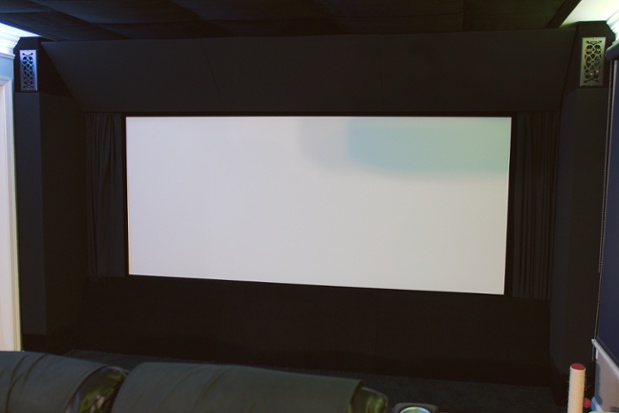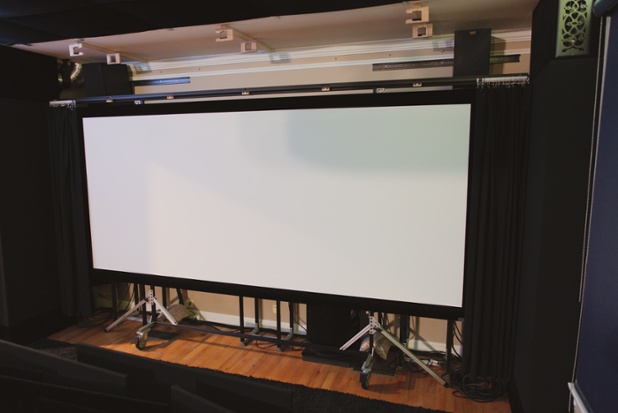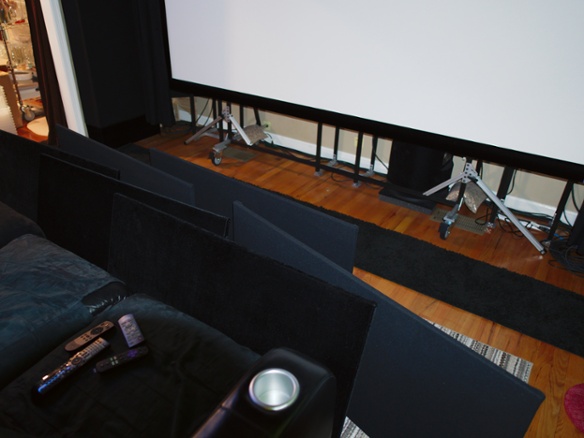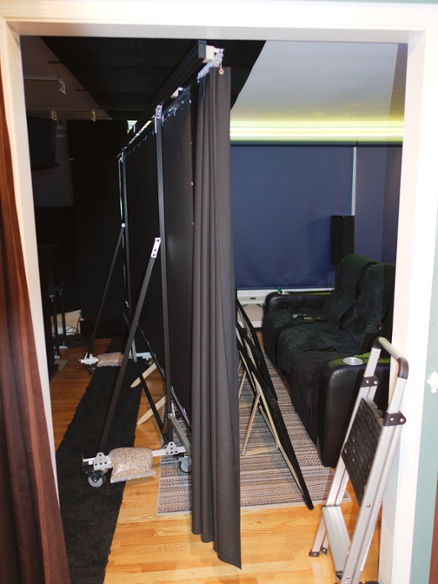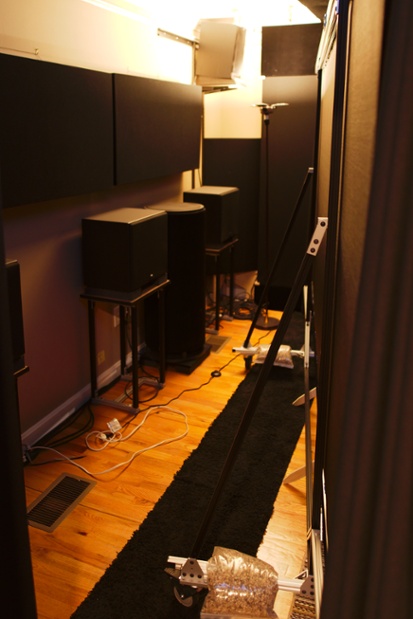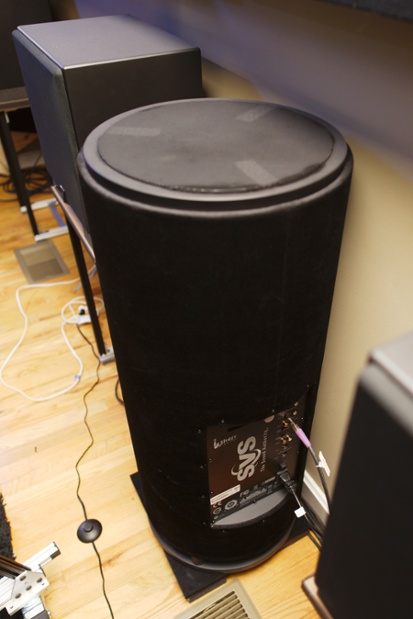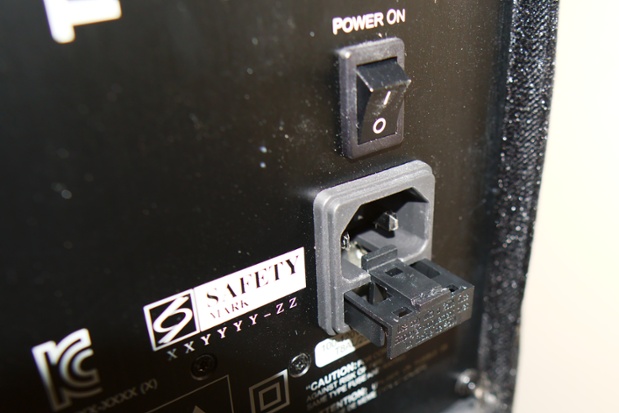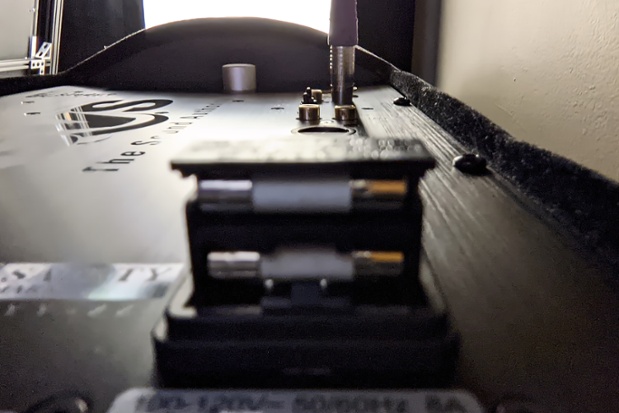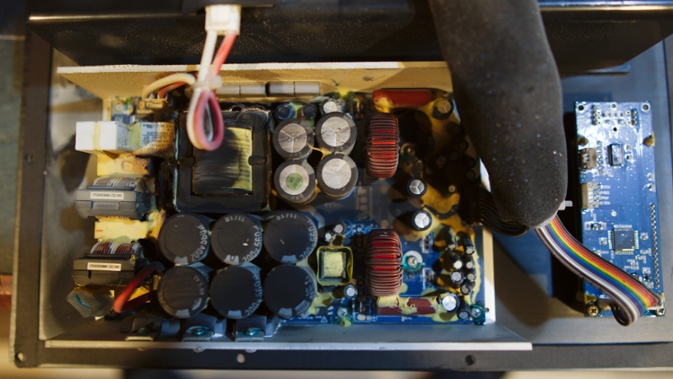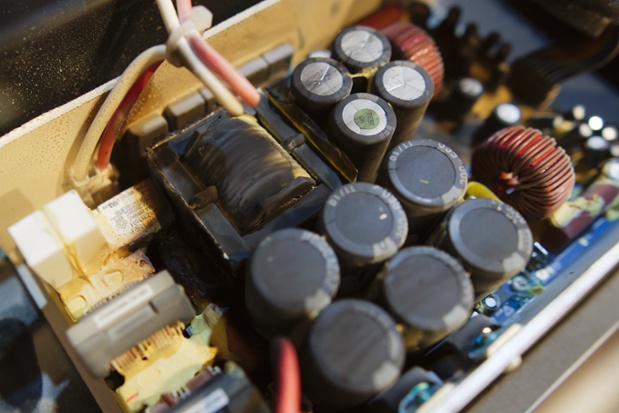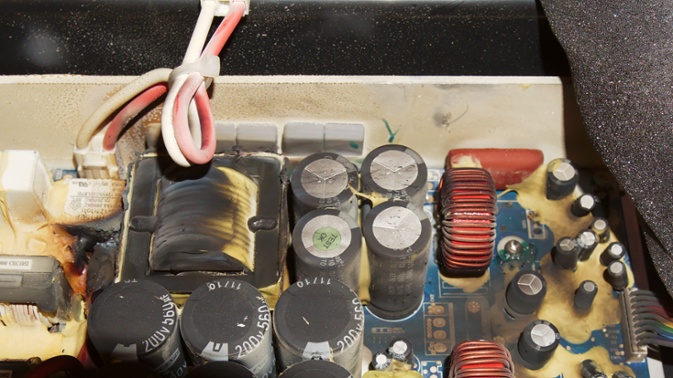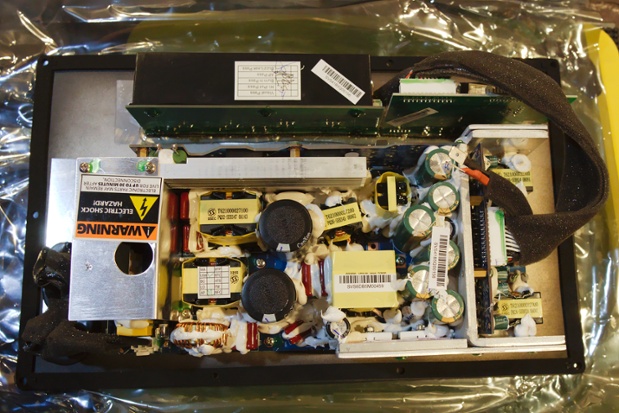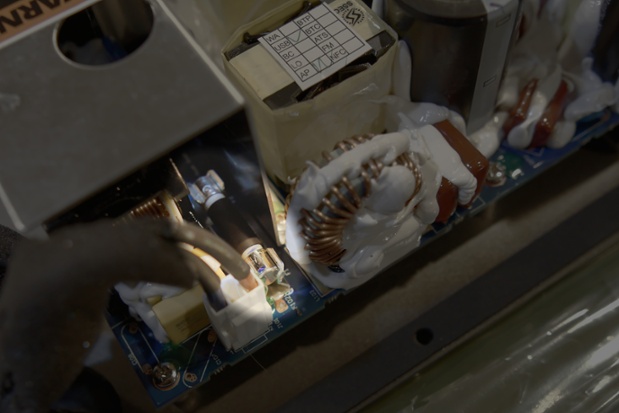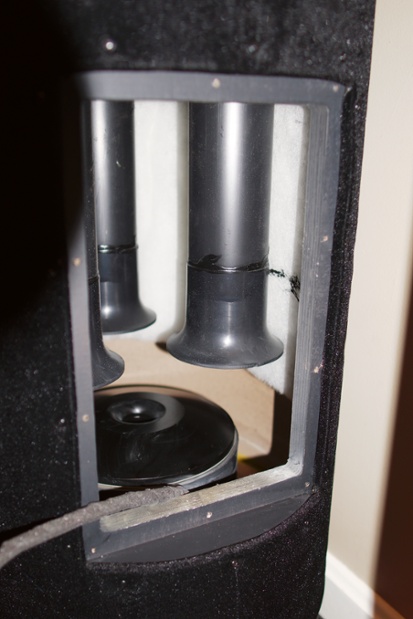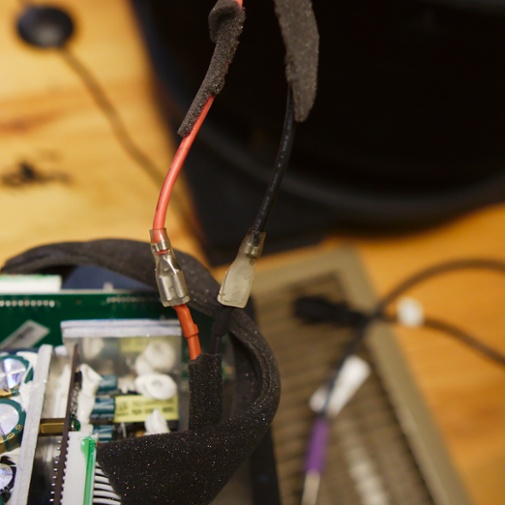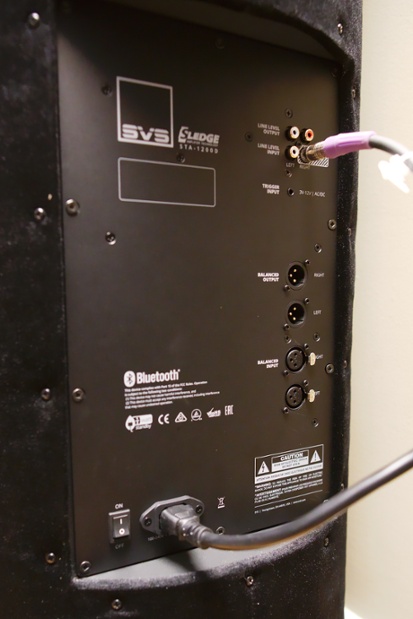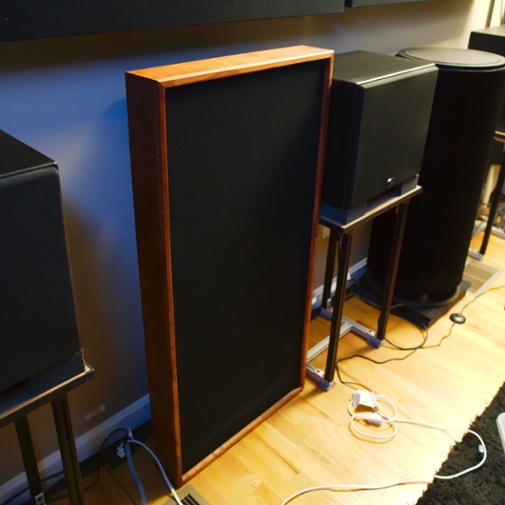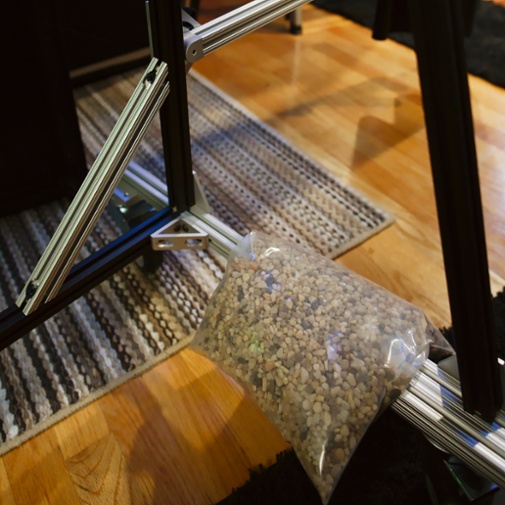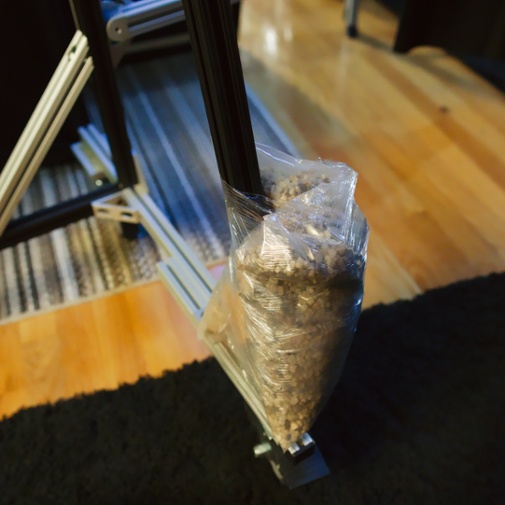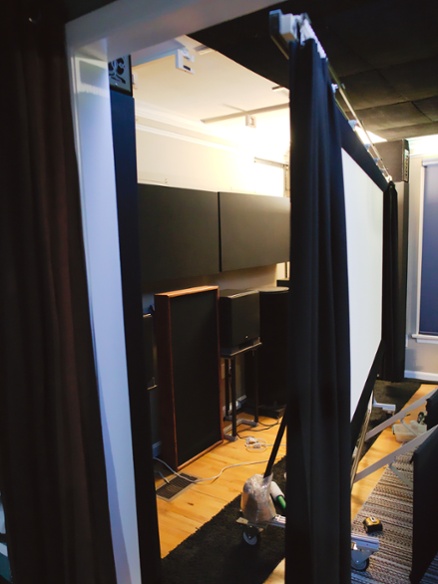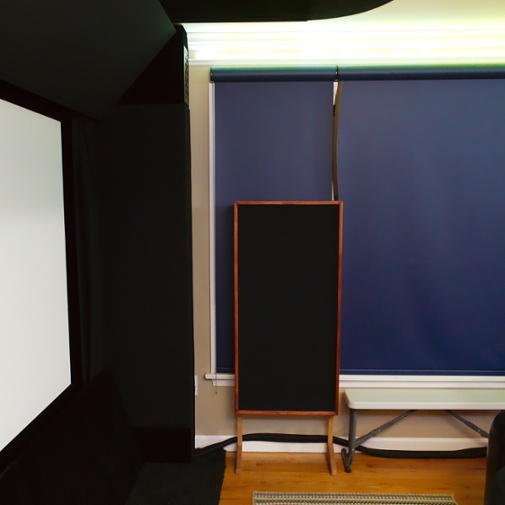Subwoofer Repair
Around a week ago I pulled away enough of the fabric panels to reach my main subwoofer with a flashlight, and found that it’s dead.
I don’t really know how long it’s been out – my regular speakers have decent bass output and there are transducers in the chairs, so it could have been a while. I just seemed to notice lately that the bass was thinner than I’d expect.
There’s a little fuse drawer embedded in the sub’s power connector. When I checked the fuse it still had continuity, which suggests that power is reaching the amplifier. The display screen on the back is dark, though, and it doesn’t have any reaction when I turn the power on/off. I tried plugging it into a different outlet, and using my receiver to send a test tone to the subwoofer, and it’s completely silent. The manufacturer’s tech support had me click and hold the control knob on the back for 10 seconds, but that didn’t do anything, either.
So I bought a replacement (and upgraded) amplifier module and now it’s time to install it.
I think this is the first time I’ve actually had to move the screen since I installed it nearly 8 years ago, so now I’ll find out whether my design actually works as intended. First step is to remove all of the fabric panels.
The ones on the floor are just free-standing and no problem. The ones on the ceiling were a bit more trouble to remove than they were in 2013. I think the main issue is that the thin foam core sheets blacking out the ceiling have sagged a bit in their centers, so they’re rubbing against the upper panels as I pull them outward.
The upper braces are only held to the ceiling by a single screw each, and I found that they rotated out of position a bit as I pulled the panels to the side. So I straightened them out and tightened those screws.
With the panels removed, I raised the outriggers and unlocked the screen stand casters, and it rolled easily. It’s a tight fit on the sides, so it took some finesse to get it out into the room. I was hoping to roll the screen a few feet to one side, but the part of the stand that holds the masking curtains is just slightly too tall to fit through the adjacent doorway.
I also grabbed a tall lamp so I’d have some light back there.
Everything seems to still be where I left it, just with a thin layer of fine dust. I know the cat has managed to get behind the screen wall to explore a few times, but he hasn’t done any damage that I’ve seen.
The SVS PC12-Plus subwoofer and its STA-800D amplifier module still look completely fine from the outside, at least.
Now that I have more light and better access, I decided to double-check the existing hardware. The fuse had seemed okay when I checked it before, but I obtained some replacements just to be sure. I opened the fuse drawer again and discovered to my surprise that there are actually two fuses in there:
I’d only previously seen and checked the outer one. I tested the inner one and it appears to be blown. That means the outer one is probably just a spare. Maybe the amp just needs a new fuse, and doesn’t need to be replaced itself?
I put the outer fuse into the inner slot, closed the drawer, and turned it on. The amp appeared to power up normally, the screen lit up, the model information appeared on it … and then there was about a second of crackling noises and the whole thing went dark. I tested the fuse and now it’s blown.
So the amp is definitely having problems. I unscrewed it from the subwoofer and as I removed it there was a definite burnt smell, similar to wood being burnt from the friction of a saw or drill.
Apparently whatever happened in there was pretty dramatic, because there’s a clearly blown-out component next to the transformer, and smoky char covering several inches of the circuit board.
The replacement amplifier is an STA-1200D, which I think has more wattage. There’s a lot of sealant around the circuit board components. There are no controls at all on the back panel, but it has Bluetooth and there’s a phone app for configuring it remotely.
It has a fuse but it’s not accessible from outside.
Before installation I did a quick check with my multimeter that the speaker is not shorted, and it reads around 4 ohms of resistance which I assume is fine.
Installation was simple. The old amp had connectors on the board for the red/black lines from the sub, and the new one has red/black pigtails that they connect to. The new amp has the same screw hole pattern as the old one, and it came with its own screws, plus a couple extras and a bit for them.
I have some old standing 2x4-foot absorbers from GIK Acoustics that are just in the way where they’re being stored, so while I had the screen wall open I also decided to see if I could fit them back there.
I found a spot for one of them, after removing the feet. I put some non-slip pads underneath so any floor vibrations won’t knock it out of position.
I’d previously draped some bags of rocks on the back of the stand to make it resistant to tipping forward. These are slightly in the way of the new absorber, so I moved them to a better spot and stretch-wrapped them to the stand.
All done, so I put the screen and panels back in place. I also put the other old absorber into roughly the 1st reflection point on the side of the screen where there’s a wall; the same spot on other side is an opening to the kitchen.
The new amplifier seems to be working fine. I re-ran speaker calibration in the receiver and have used the system for several hours since then without any issues.
